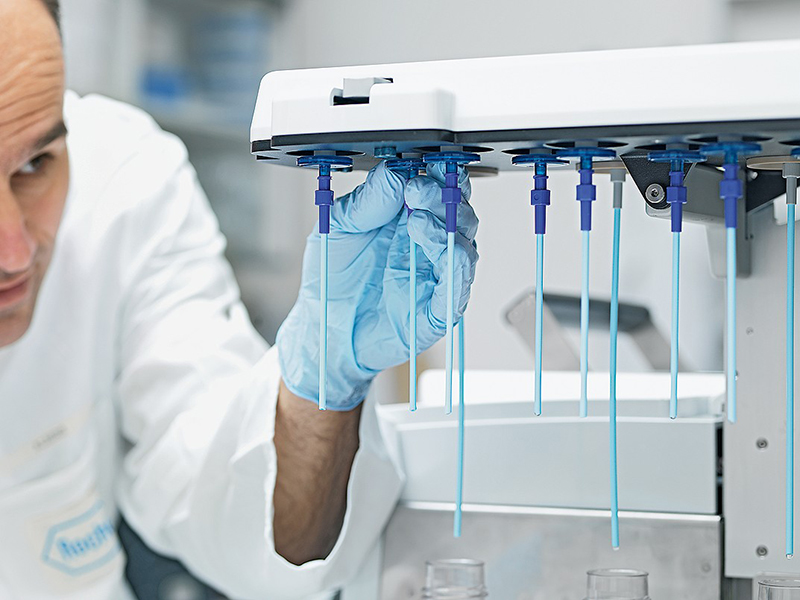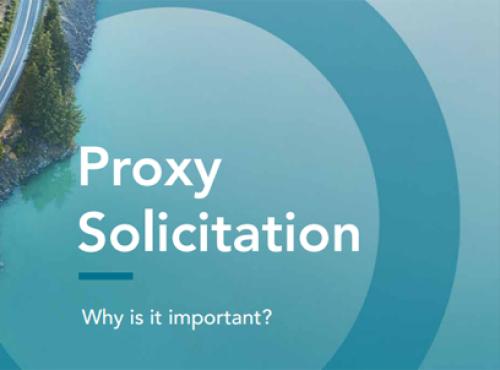You’ve been part of the Roche IR team for several years and before that worked on the sell side. What elements of your past experience do you think made you best suited for the head of IR position?
I think it’s a mix of things. Actually, I would go back one further step in my career as the basis was laid with my training as a biochemist, doing basic research for six years, before joining a small boutique investment firm that focused on life sciences and healthcare investments. Both the narrow view as an expert scientist on a topic and the high-level view as an industry expert, which also included some work on corporate finance projects, were essential for successfully moving into the IRO role.

Working as a scientist teaches you a lot about how scientific progress is achieved only slowly over time through hard work in an extremely fast-moving and competitive environment. Working as a sell-side financial analyst teaches you something about how to manage risk and reward in innovation from a portfolio and company perspective. What is also very important is that you get to know first-hand what life feels like for analysts, fund managers and investors, and you gain a deep understanding of the rules of the game.
What have been your biggest IR challenges and achievements since taking on the lead IR role at Roche? What excites you most about the role and IR more generally?
Because I was involved in all major aspects of IR at Roche before, I think we were able to manage a smooth hand-over in January. To me it was critical to keep the pace and quality of our communication and to ensure that engagement levels with the investor community remained high.
Besides our regular IR events at medical conferences and our Pharma Day – which we could finally host again in London – we also held our first ESG event on the topic of ‘Access to healthcare’ recently. Overall, I am very pleased with how the transition went. The top ratings we achieved a few weeks ago for our senior management and the entire IR program are a testimony to our efforts.
 On the challenges: after the share price hit an all-time high, we faced some volatility due to first clinical data from late-stage trials for giredestrant and tiragolumab, which despite confirming their efficacy did not allow for an early launch. And with [potential Alzheimer’s treatment] gantenerumab there is another major readout just around the corner – overall I would say business as usual for an innovative pharma company, although it does not happen too often that the share price of a company the size of Roche gets moved that much.
On the challenges: after the share price hit an all-time high, we faced some volatility due to first clinical data from late-stage trials for giredestrant and tiragolumab, which despite confirming their efficacy did not allow for an early launch. And with [potential Alzheimer’s treatment] gantenerumab there is another major readout just around the corner – overall I would say business as usual for an innovative pharma company, although it does not happen too often that the share price of a company the size of Roche gets moved that much.
Another challenge was an internal one: at the same time as the hand-over from Karl [Mahler], we had to fill several positions in the IR team. Keeping the pace, finding suitable candidates and getting them started was demanding but, overall, a good problem to have as our new team members bring additional, rich backgrounds and nicely complement the team’s capabilities.
I consider IR to be uniquely positioned within a large corporation like Roche with 100,000 employees. As IR people, we have two major tasks: one is inward-facing and includes building and maintaining a broad network so we get all necessary information in a timely manner. The other is external-facing in fulfilling our duties to keep investors updated on the company’s business prospects at any given time.
 What really excites me is that because we are an innovation-driven company operating in highly competitive markets, you remain very close to scientific progress with many opportunities to meet key opinion leaders first hand so it really never gets boring and there is always something new to learn. As we are closely following analysts and competitors on a daily basis, there is also an occasional opportunity to bring an external perspective to the table.
What really excites me is that because we are an innovation-driven company operating in highly competitive markets, you remain very close to scientific progress with many opportunities to meet key opinion leaders first hand so it really never gets boring and there is always something new to learn. As we are closely following analysts and competitors on a daily basis, there is also an occasional opportunity to bring an external perspective to the table.
What are your IR plans for the near term?
For the remainder of this year, we still expect a few late-stage read-outs, including gantenerumab – which is probably getting the most attention right now – and Vabysmo, which could lead to a label extension beyond the already approved indications in age-related macular degeneration and diabetic macular edema. In addition, we have scheduled one more IR event at a medical conference (ASH on December 14), where we will highlight our maturing portfolio in malignant and non-malignant hematology.










